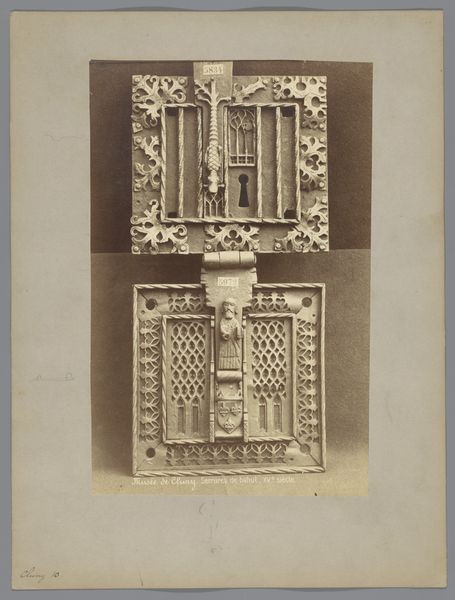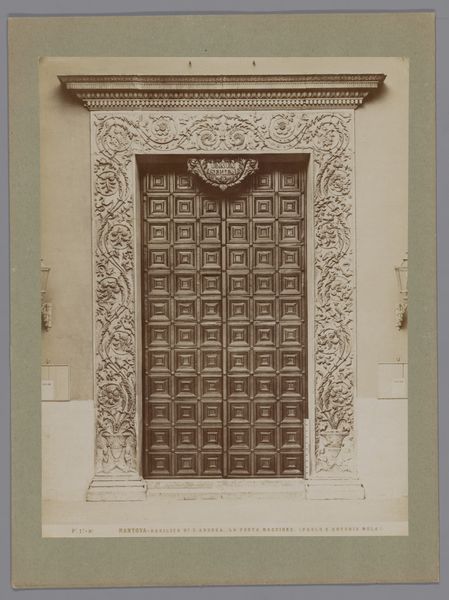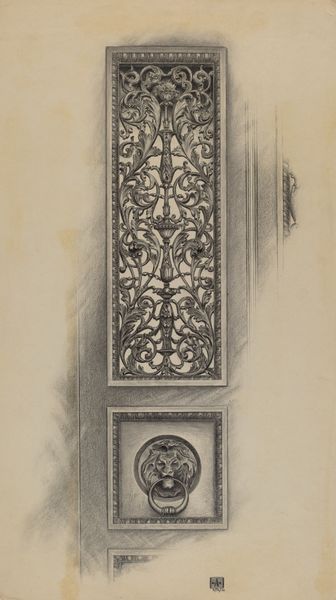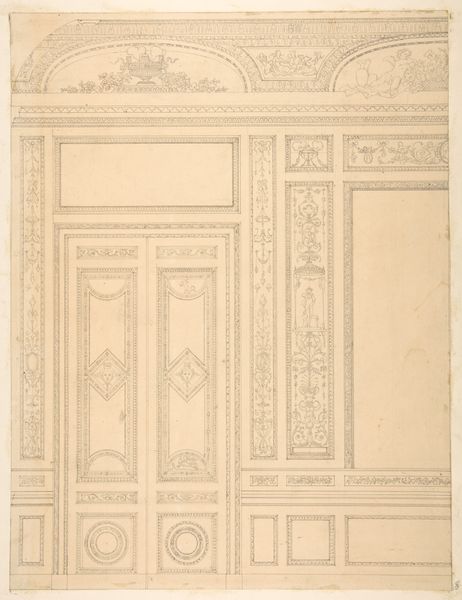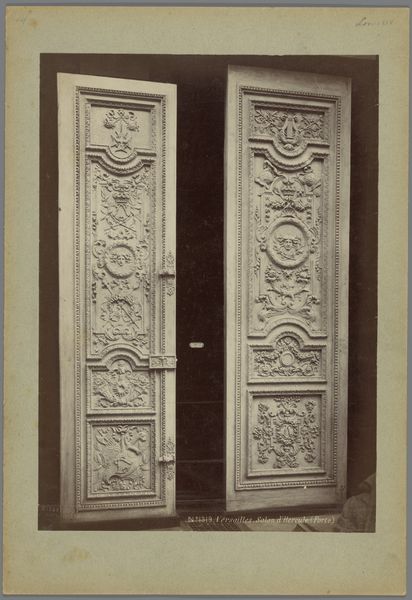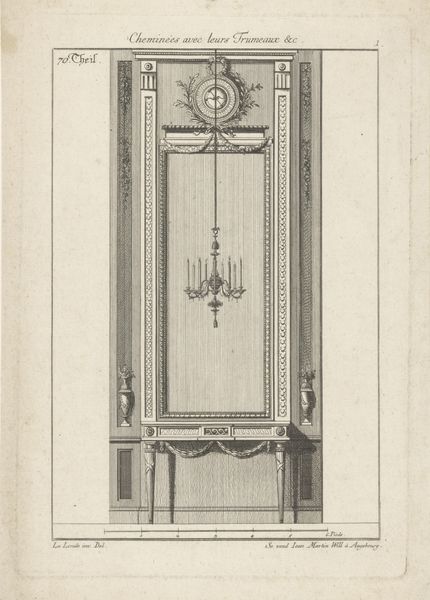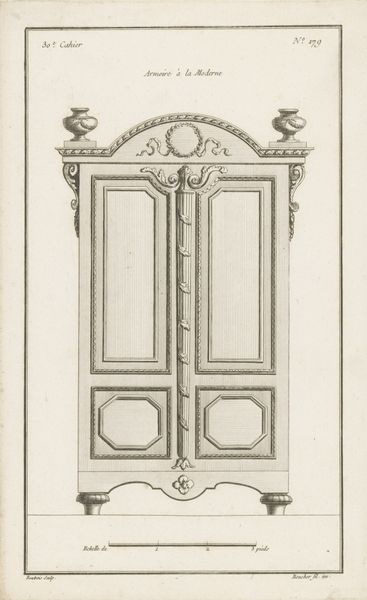
drawing, print, etching
#
drawing
# print
#
etching
#
geometric
#
decorative-art
Dimensions: height 450 mm, width 326 mm
Copyright: Rijks Museum: Open Domain
Editor: This etching from between 1875 and 1930, titled "View of a decorated door of the Music Room," presents the ornate doors of what I assume is a lavish room. The details are so intricate! What kind of statements do you think interior depictions like this make? Curator: Well, let’s think about what’s being depicted: these doors belonged to the Salon de Musique in L'Hotel Beauharnais. It’s not just any room, but a carefully curated space designed to impress. Prints like this document and disseminate those designs to a wider audience. This piece allows us to analyze not just artistic skill, but also social stratification, prestige, and aspiration. Editor: So, it’s less about the artist's inner thoughts, and more about the cultural implications of wealth on display? I guess I'm struggling with what kind of function images like this served. Were they purely for documentation? Curator: Documentation, yes, but also aspirational display. Prints like this allow for the replication and dispersion of styles. Consider how the "decorative-art" tag applies here; it becomes a means of studying taste-making. How did styles travel? Who decided what was fashionable? Reproductions such as this influenced interior design. Editor: That's fascinating; I never thought about how images themselves participate in circulating power dynamics in that way. It makes you wonder, what kind of audience were they trying to appeal to and the status associated with the style! Curator: Exactly. Now think about how museums and galleries present and legitimize this style today... Editor: Hmm. I see it now. I walked in only thinking about the beautiful doors but understand there's so much more to them in social context. Curator: Indeed, the public role of art is rarely neutral, and its history tells the story of power.
Comments
No comments
Be the first to comment and join the conversation on the ultimate creative platform.
